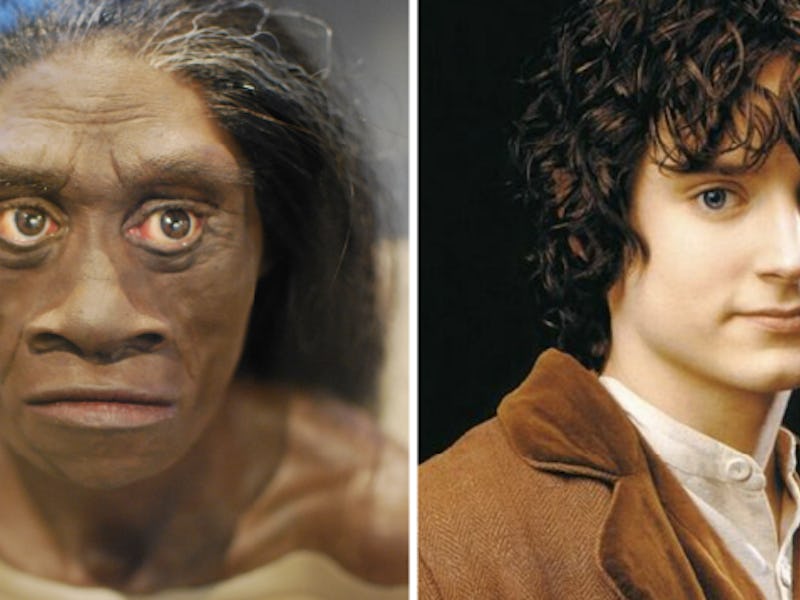"Bizarre" Bone Discovery Inspires College Course on Hobbit Biology

Thousands of years ago, hobbits walked the earth. No, they weren’t exactly hobbits of the pipe-smoking Lord of the Rings variety, but they were of similar stature, at approximately three feet and six inches tall. They probably also had hairy feet. Technically called Homo floresiensis, these primitive hominids are largely still a mystery — but their biology is so intriguing that it inspired scientists to design a new, free college course allowing the rest of us to examine the hobbits ourselves.
The online course “Homo Floresiensis Uncovered: The Science of the Hobbit,” which is accepting students until March 20, was inspired by a strange discovery that went down in 2003. On the Island of Flores in Indonesia, a team of scientists accidentally discovered tiny, hominin fossils that looked human but were too small to belong to our species.
The cave where the specimens were found.
Richard Roberts, a geochronologist who was on the dig, told Nature that the “absolutely bizarre” discovery occurred after researchers spent two years sifting through a cave full of the ancient bones of Komodo dragons, giant storks, and tiny elephants in an attempt to figure out how humans in Asia got to Australia. What they found instead were fossils from a never-before-seen hominin species, whose diminutive size led them to nickname them “hobbits.”
While initial carbon dating pointed to the hobbits living 18,000 years ago, an updated 2016 analysis suggested they were even older, dating them to a period between 100,000 to 60,000 years ago. These little guys, who are believed to have had no chins, tiny brains, and large teeth, also likely got wiped out by the humans who swooped into that region about 50,000 years ago.
As in the Lord of the Rings series, the hobbits were at the mercy of humankind. “I can’t believe that it is purely coincidence, based on what else we know happens when modern humans enter a new area,” Roberts said, drawing a comparison to the vanishing of the Neanderthals once modern humans migrated into Europe. The time stamp on these fossils is a “smoking gun for modern human interaction” according to Roberts, but they “haven’t yet found the bullet.”
Today, scientists are hunting for this “bullet” by way of excavating for the modern humans that likely interacted with these hobbits. And while this evolutionary breakthrough waits to be discovered, wannabe scientists can learn all they can about these fascinating hobbits from the comfort of their own home: The course, offered by Australia’s University of Wollongong, lasts for four weeks and each week consists of two hours of class. Class objectives include debating the “evolutionary implications of the discovery” and reflecting on how these hobbits fit into the broader story of humans. Tolkien’s legendary series is, as far as we can tell, not required reading.